5 Best Natural Wound Healing Herbs For Your Apothecary
Learn how to heal wounds fast with all natural, easy to find herbs. These 5 herbs are my favorite go-to herbs for natural wound healing. They not only help heal the wound, but will help stop bleeding, clean the wound of dirt and debris, and help fight infection. Leave the store bought first aid and become a confident natural wound healer yourself.
*I am not a doctor and is this not medical advice. Please consult your physician before using herbal medicine.
PIN IT FOR LATER ⤵️
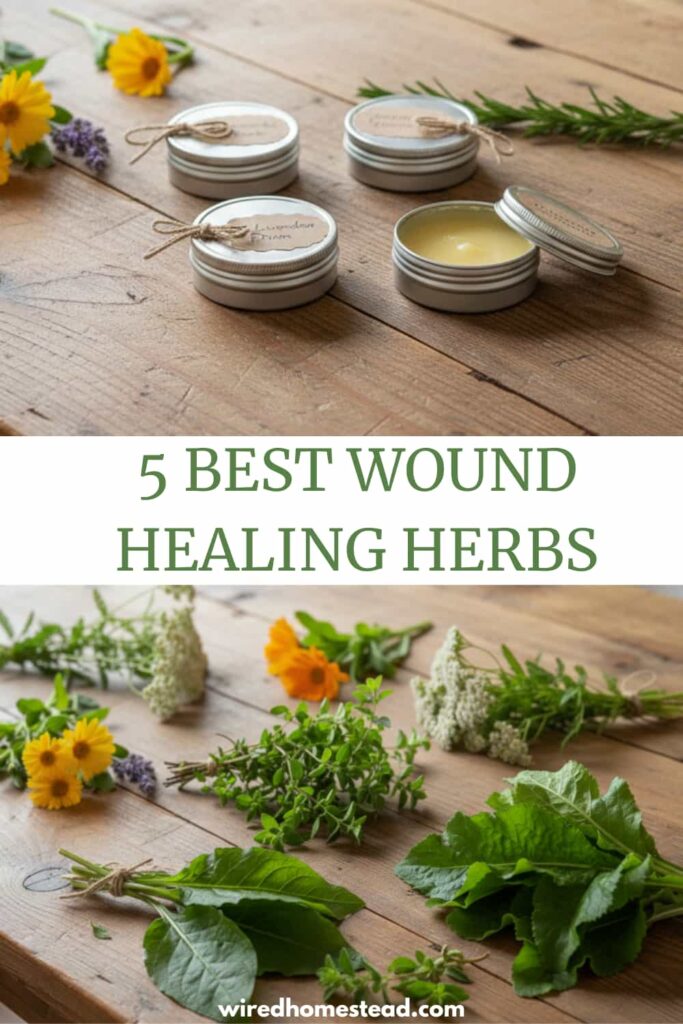
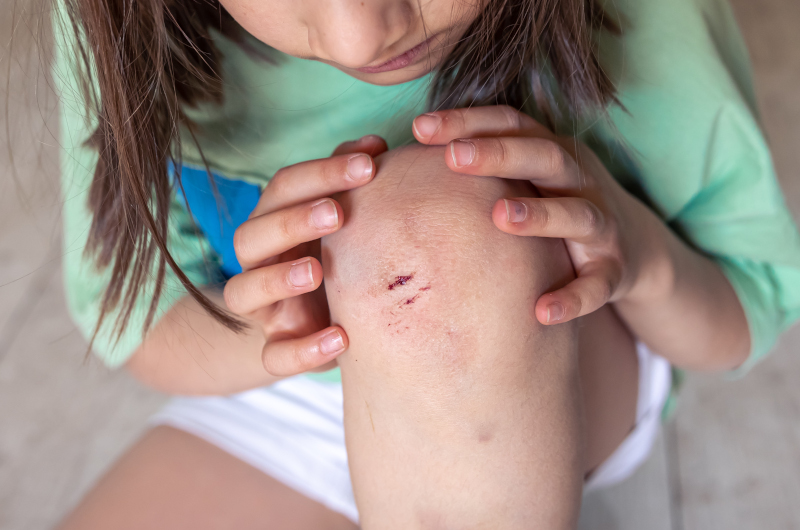
Why Use Herbs for Natural Wound Healing?
If you look at the first aid section in the store you’ll find many different options to help heal all your basic, every day wounds. Look a little closer at the ingredient list, though, you’ll find so many questionable ingredients. Most have some kind of petroleum based product in them along with pharmaceuticals.
Our bodies are created for natural remedies. Modern culture, however, focuses on all the laboratory created medications they create to “make us better.” Many of the medications and first aid treatments we can buy at the store are based on plant medicine. Asprin was developed from willow bark, for example. If plant medicine is at the root of many pharmaceuticals, why not just go to the plant itself to harness it’s healing powers? Leave the “extra” ingredients behind.

Our bodies do not respond nearly as well to synthetic medicine as they do natural medicine. Your body can have a hard time determining what to do with synthetic substances, but it knows exactly what to do with natural ones.
I’ve healed all different types of scrapes, cuts, infections, and burns with these herbs. There are many others that are amazing at healing wounds naturally, but these are the ones I’m always reaching for. They are some of the first plants I add to my garden so I know I will always have them when they are needed.
Each of the herbs I’ve chosen here as my top natural wound healing herbs are exceptional on their own. However, when paired together they create a natural remedy for wound healing that can’t be beat.
All of these herbs I’ve used with success on adults, children, pets, and livestock. However, you should always consult your doctor, pediatrician, or veterinarian before using herbs on yourself, other adults, children, or animals.
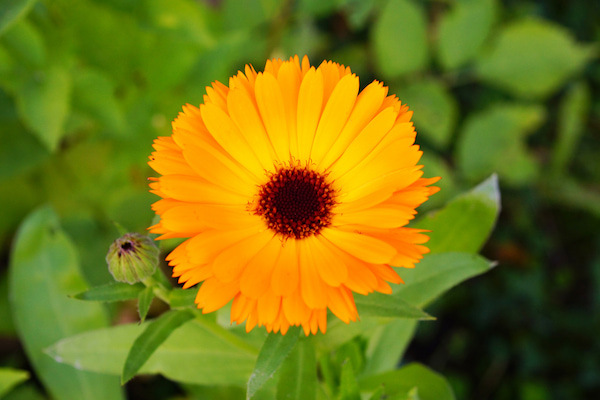
Herb #1 Calendula
When it comes to natural wound healing, calendula is always at the top of my list. It’s a beautiful flower that looks quite delicate, but it packs a huge medicinal punch.
Calendula has great anti-bacterial properties. This is going to help keep infection at bay so your wound can heal. It also has anti-inflammatory properties that can help decrease inflammation at the site of the wound and help relieve pain.
Calendula also has amazing collagen producing properties. Collagen makes up about 30% of your body’s proteins and is important for many different functions. For wound care, it is crucial in the formation of new tissue and blood vessels. Without collagen, the regeneration of cells wouldn’t have any structure to build on and they would end up collapsing. This means your wound would never heal.
In comes calendula to help save the day! Because it can help you produce more collagen, it helps your skin regenerate, therefore causing your wound to heal faster. It’s pretty incredible!
If you want to learn more about how amazing this herb is, check out my post on Calendula.
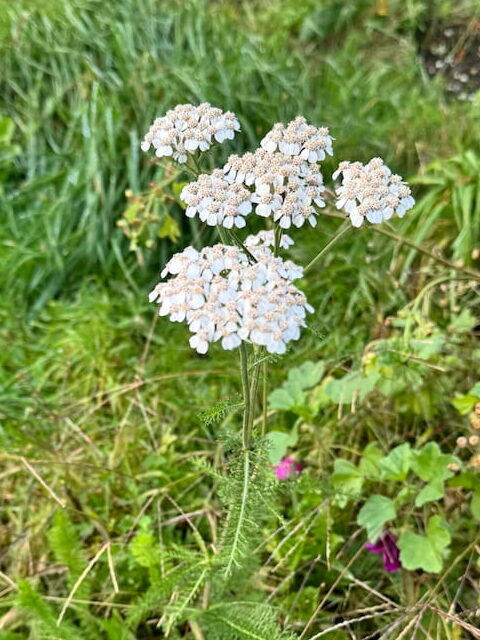
Herb # 2 Yarrow
Yarrow is another must-have herb for me. It excels at everything natural wound care related.
Most wounds generally come with some sort of bleeding. It may be a small amount, or it might seem like a lot. I cut my finger the other day and even though it wasn’t bad enough to require stiches, boy did it bleed! Luckily, the wound healing salve I make contains yarrow.
Yarrow helps stop bleeding by constricting the blood vessels at the site of the wound. With the shrinking of blood vessels comes a reduction in bleeding. I try to never be without this herb for this reason.
Besides stopping bleeding, yarrow also has it’s own anti-bacterial and anti-inflammatory properties. Just like calendula, these properties help fight or prevent infection and help reduce inflammation and pain at the site of the wound. A couple years ago I got a bug bite that became infected. I had yarrow and the next herb, oregano, on hand. Using a poultice of yarrow and oregano tea, I was able to clear the infection in just a couple of days. By the end of the first day it was already feeling a lot better.
If you want to learn more about what this plant can do for you, check out my post on Yarrow.

Herb # 3 Oregano
Oregano made my list because it has such good anti-bacterial qualities. And you probably have it in your pantry or kitchen cabinet right now! I’ve personally used oregano to heal skin infections so I know how amazing it is. I don’t know what I would have done without it!
I mentioned in the section about yarrow how oregano and yarrow helped me heal an infected bug bite a couple years ago. That was the first time I’ve ever really healed an infection with only herbs and I was so excited! There’s nothing like knowing you have the power to heal with only a few plants.
Oil of oregano has a reputation for healing because it’s such a strong anti-bacterial and anti-microbial. The reputation is well deserved. I keep an infused oil with oregano on hand to use. Some people will talk about the essential oil, but I don’t use those. I prefer using the whole plant as nature intended. Then you get all the germ fighting effects of the plant and not just the highly concentrated portions in the volatile oils (the scientific term for essential oils).
It also has strong anti-inflammatory properties (have you noticed a trend yet?). This helps calm the tissues around the wound site and relieve pain.

Herb # 4 Comfrey
I don’t think there’s any herb that helps cell regeneration quite like comfrey. It triggers cell division quite rapidly, which does make it very useful for most types of wounds. Do not use it on deep, puncture wounds however. It can trigger cell regeneration at the surface so fast that the deeper tissue doesn’t have the time to heal. This can create abscesses or trap infections, then you have a whole other problem on your hands!
I’m including it on this list because I wouldn’t be without it in my general healing salve. Deep wounds tend to require some extra care, anyway, so those are not the basic type of wounds I’m addressing in this post. For all the other basic types, comfrey excels.
Comfrey also helps with collagen deposition, which is essential for wound healing. It has anti-inflammatory properties that help with the inflamed tissue around the wound and pain relief.
It has the ability to penetrate into the skin, not just work on the skin’s surface. It’s great for things like bruises and other wounds that occur without breaking the skin.
To learn more about how incredible this herb is and more reasons on why you need it in your life, see my post on Comfrey.
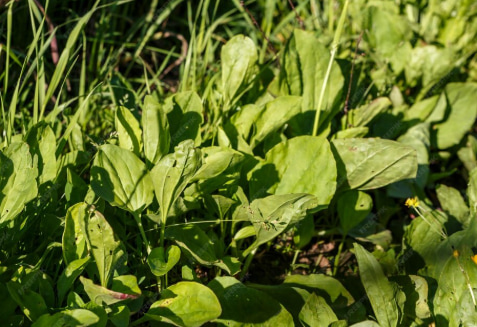
Herb # 5 Plantain
My last choice for the 5 best natural wound healing herbs is plantain. There are two different types of plantain, narrow leaf and broadleaf. They can be used interchangeably, one is not better than the other. You’re likely to have one of them growing nearby.
Plantain will be one of the first plants I teach my children to use. It’s amazing for things like stings and bug bites. Plantain has the unique ability to draw things out of the skin. This helps bring relief for stings and bites, as well help draw slivers out. For this reason alone, plantain makes the list of my top 5 herbs for natural wound care.
Beyond that, this herb also can help cell regeneration. The healing of wounds requires cells to regenerate and replace the damaged ones. Plantain helps this process happen. Paired with calendula, they can really provide that boost the cells need to close and heal a wound.
Along with all the other herbs listed here, plantain also has very good anti-inflammatory and anti-bacterial properties.
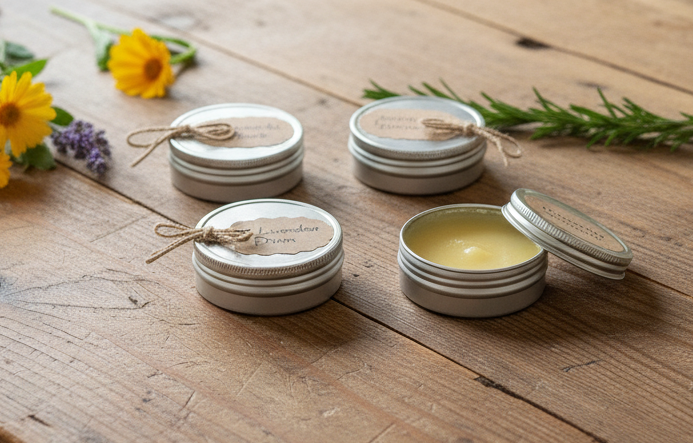
What Other Herbs Are Good For Wound Healing?
This list only goes over the ones I choose as my go-to list of wound healing herbs. They are my 5 favorite ones. That does not mean they are the only 5, though. Here are some other common herbs that you may want to consider adding to your apothecary as well.

- Thyme – great anti-bacterial and anti-inflammatory properties. Easy to find and likely to already be in your kitchen at home. Learn more about Thyme and how it can help you.

- Basil – the anti-bacterial properties of basil are extraordinary. It really targets and fights infections which make it great for wound care. It’s also a very good anti-inflammatory. Learn more about Basil and it’s benefits.
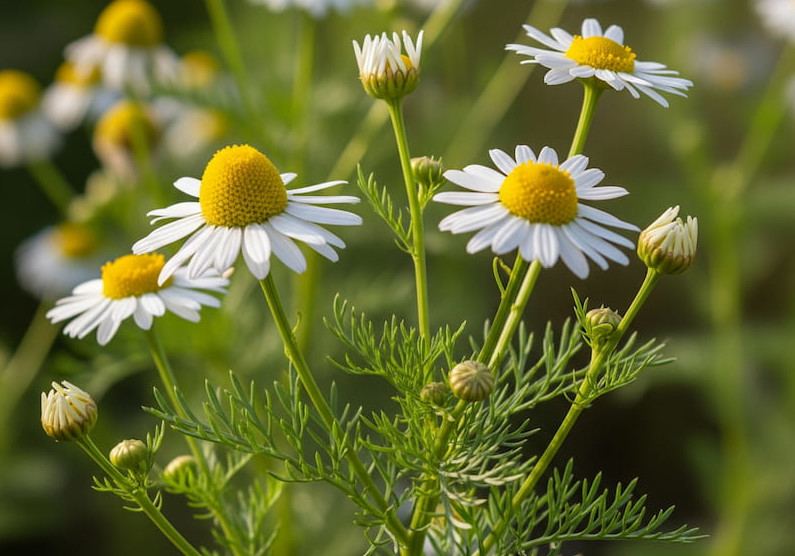
- Chamomile – it’s gentle but powerful at accelerating wound healing. The gentleness makes it great for use on babies and small children. I like to use use it in my diaper rash creams. It also has strong anti-bacterial properties.
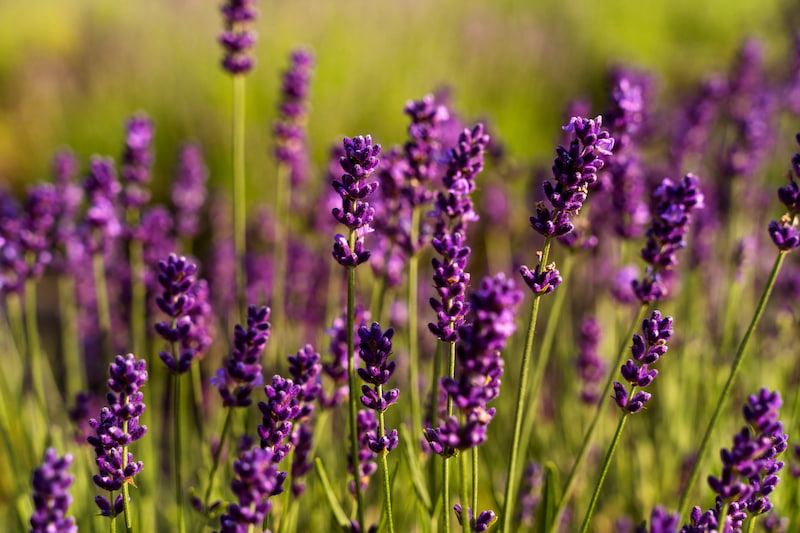
- Lavender – it’s strong anti-bacterial properties make it a good choice for wound healing. Be careful, though, as many people are allergic to lavender. That’s the main reason I leave it out of my salves.
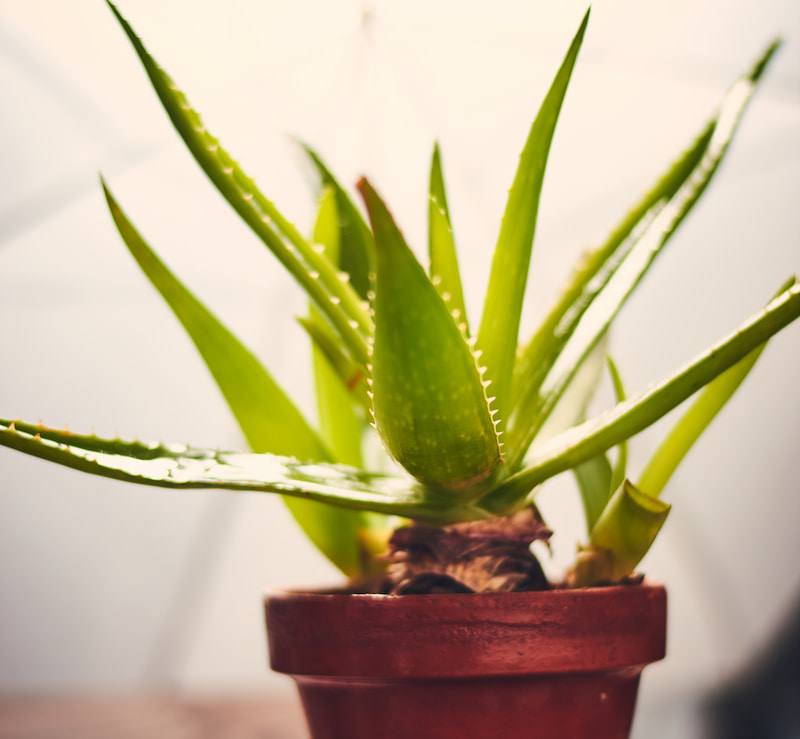
- Aloe vera – most of us have heard of aloe vera for healing. It’s a great choice because it’s highly anti-inflammatory and also helps promote collagen production. This is a must have house plant for me and I have used it successfully for minor burns before.

- Honey – Honorable mention goes to honey. While honey is not technically an herb, it has powerful healing properties that make it a great choice for natural wound care. It’s a natural antiseptic, which means it can help clean wounds and prevent infection. It also promotes faster healing.

How To Use These Herbs for Natural Wound Healing
The best way I’ve found to use herbs to heal wounds naturally is as a salve, compress, or poultice. You can use a tincture as well, but you’d want to dilute it if you do an alcohol tincture. It wouldn’t feel very good to spray alcohol on an open wound!
Check out my How To Use Medicinal Herbs post to learn how to make each of these natural remedies for wound healing. I even have a post on how to make a DIY Healing Salve for more detailed steps.
You’re Now A Natural Wound Healer
Now you’re equipped to take on just about any minor wound you come across in a natural, more holistic way. Plant medicine is powerful! Throw away the petroleum based first aid creams and pick up your new natural wound ointment. Watch your cuts, scrapes and minor burns heal faster.
If you have any herbs you think should be added to this list, put them in the comments below!
PIN IT FOR LATER ⤵️
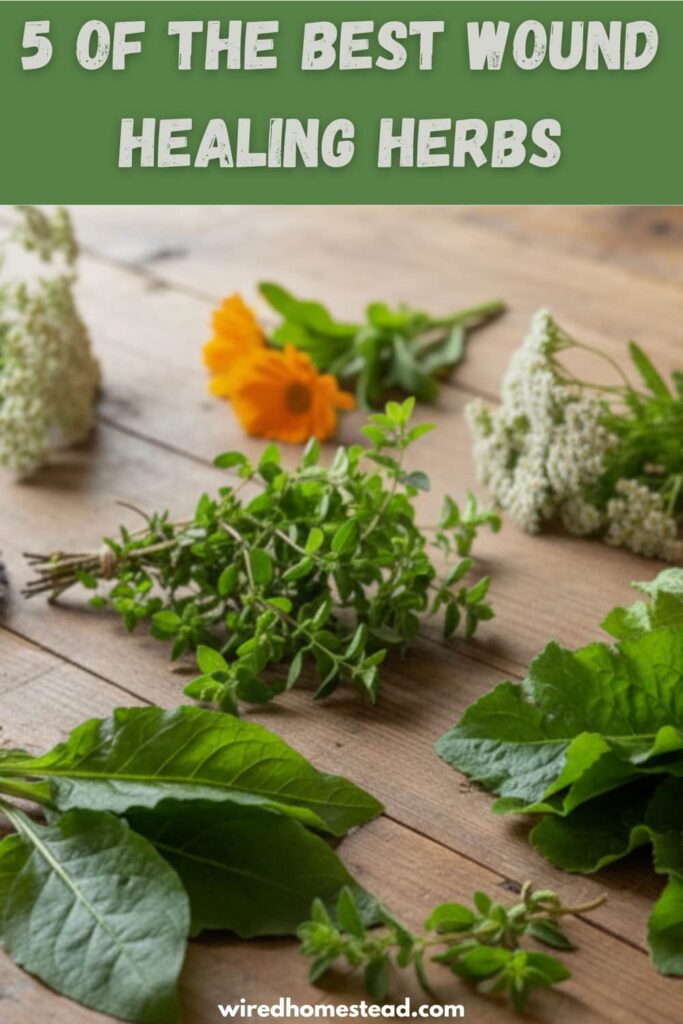



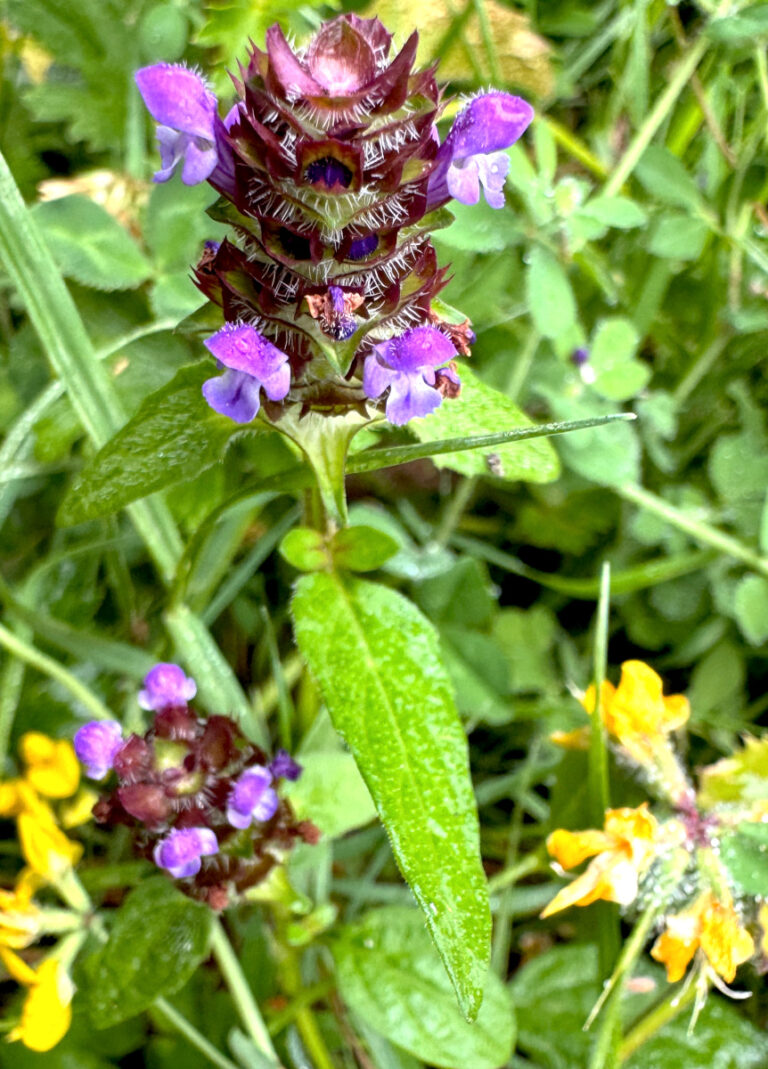



I really enjoyed this! I’m going to read your post on How to Use Medicinal Herbs next to learn how to use the herbs in growing! And then, I want to grow a few more things because of this!
I’m so glad it’s inspiring you! I hope you find some great ways to use them that work for you.
I love making salves with some of these herbs! I need to remember to harvest some yarrow from my garden which has miraculously made it through our first nights of frost!
I had yarrow that made it through our mild frosts so far. I had little hope for it last year, but when spring hit the patch I have came back even bigger. It’s so resilient!